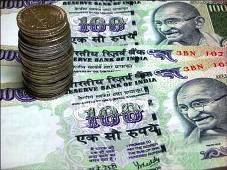 With stock markets rising more than 100 per cent in the last six months, it could be a good time for investors to take a relook at their portfolios.
With stock markets rising more than 100 per cent in the last six months, it could be a good time for investors to take a relook at their portfolios.
Financial planners say that investors should ideally follow a defined equity-debt allocation and tweak investments accordingly once or twice a year.
Let us take the example of Nitesh Kumar, 30, an investment banker with a portfolio of Rs 10 lakh (Rs 1 million) at the end of March 2009. Let's suppose that his portfolio is divided, depending on his goals and risk appetite, on the basis of a debt to equity ratio of 30:70 -- 30 per cent, or Rs 300,000, in debt and 70 per cent, or Rs 700,000, in equities.
Further divide the equity part -- 60 per cent, or Rs 4,20,000, in large-cap diversified equity funds, 30 per cent, or Rs 2,10,000, in mid- and small-cap funds and 10 per cent, or Rs 70,000, in sectoral funds. Similarly divide the debt investments like this -- 50 per cent, or Rs 1,50,000, in fixed deposits and 25 per cent (Rs 75,000) each in mid- and long-term debt funds and short-term debt funds.
Between March and September, the stock markets rose sharply. As a result, Kumar's investments in equities have given handsome returns. The debt investments, on the other hand, have not done too well.
His numbers look something like this. On an average, his investments in equities (large- mid- and small-cap and sectoral funds) have returned 77 per cent, or Rs 5,95,000, in the last six months. Debt investments have returned just 3 per cent, or Rs 9,000.
As a result, the value of his portfolio is Rs 16.04 lakh (Rs 1.6 million). The portfolio is now heavily in favour in equities -- 81 per cent equities and 19 per cent debt.
In order to maintain the 30:70 debt to equity ratio, Kumar needs to move money from equities to debt.
Here are his options. According to Mukesh Dedhia, director, Ghalla Bhansali Stock Brokers, "One could withdraw money from the equity side and invest it in debt instruments. In this case, withdraw the 11 per cent from the equity side and invest in debt."
This means Kumar will have to withdraw Rs 1,81,200 from his equity gain of Rs 5,95,000 and put it in debt, ideally in mid-term debt funds. And for those looking at staying invested for six months to one year, short-term debt funds could be a good bet as they are expected to give decent returns.
In other words, he would need Rs 11,22,800 in equities and Rs 4,81,200 in debt to keep the debt to equity ratio at 30:70.
However, it is important to note that if the equity investments have not been held for over a year, the investor will have pay 15 per cent as short-term capital gains tax. And that will mean a substantial reduction in returns -- by almost Rs 90,000. In this situation, one can wait for some more time before realigning the portfolio.
There are other options as well. D Sundarajan, investment consultant, said Kumar could withdraw and sell a little more than the earned profit from the equity side -- around 2,25,000 (instead of Rs 1,81,000). Out of this, Rs 1,50,000 can be invested in debt and the rest Rs 75,000 in gold exchange-traded funds.
"Kumar could start buying small portions of gold ETF and gradually take it to 5-10 per cent of his portfolio. This will help him diversify his portfolio and ensure safety."
Others said he could sit tight for some more time given that equities are having a good run and there is uncertainty on the debt front.
Investors should choose depending on their risk appetite and financial goals.





